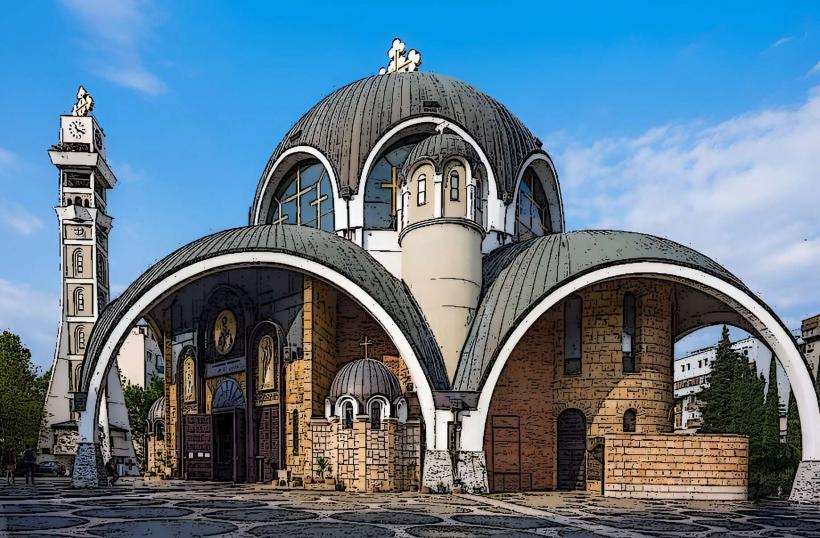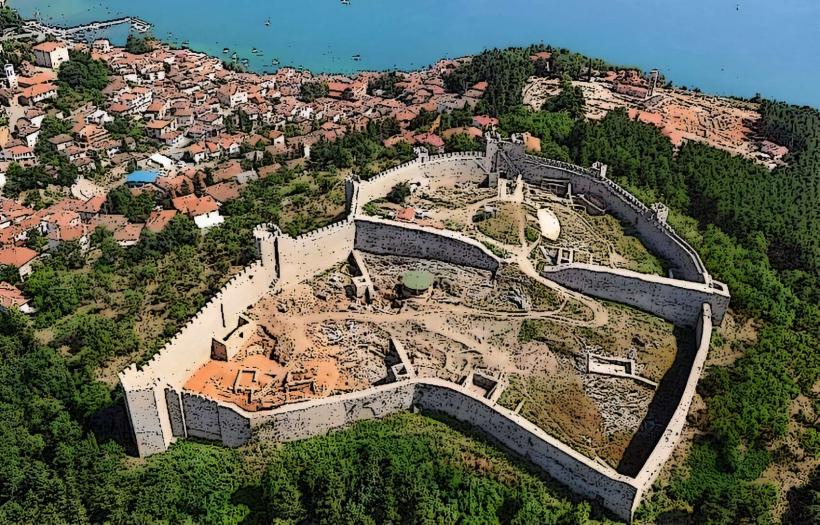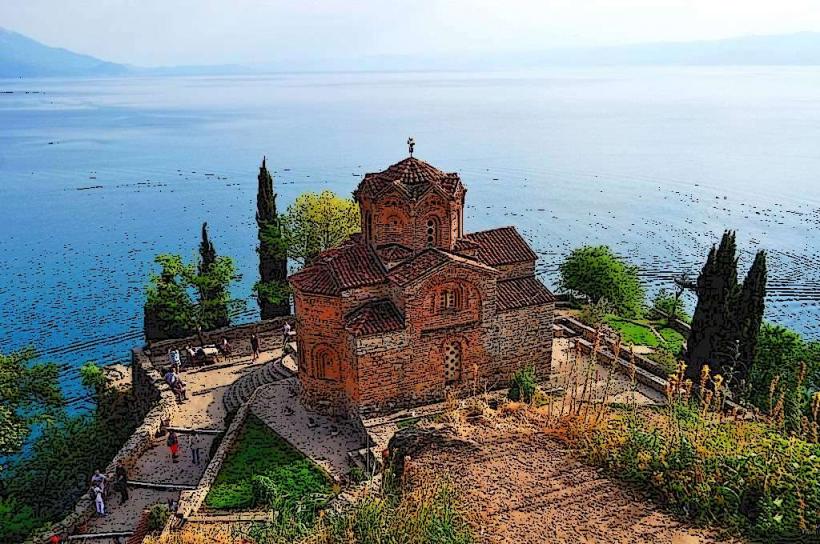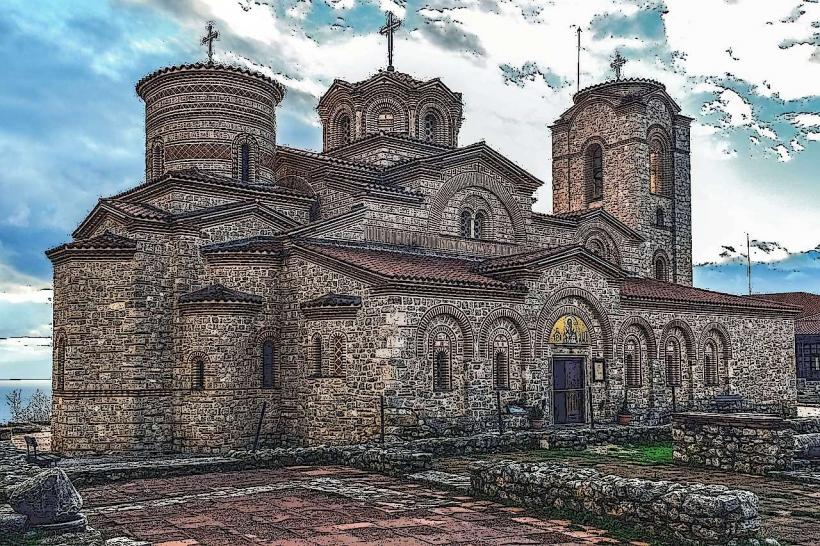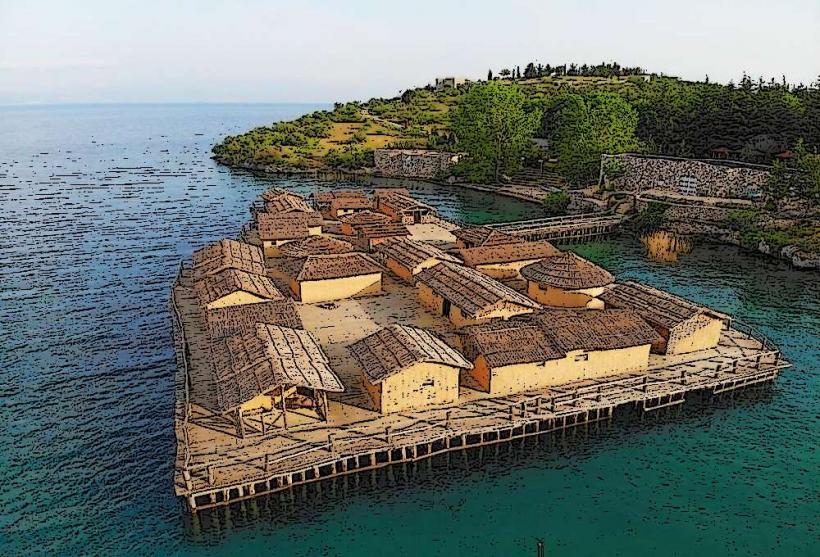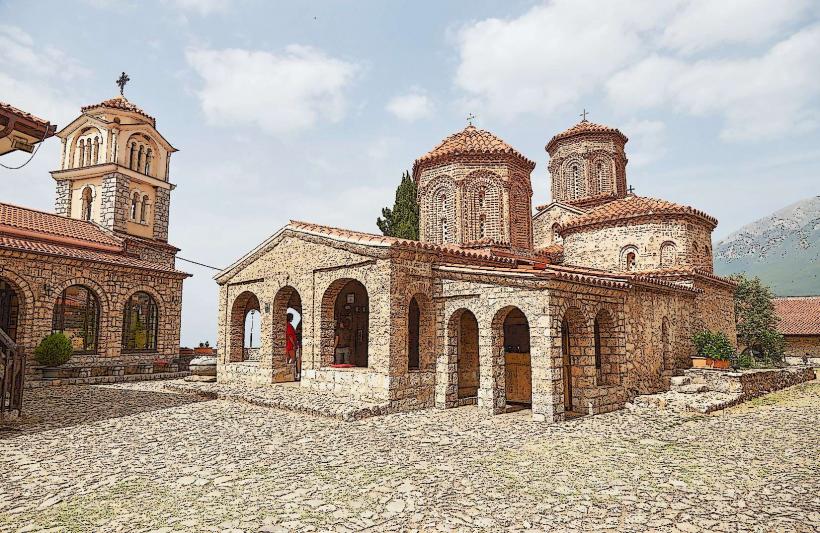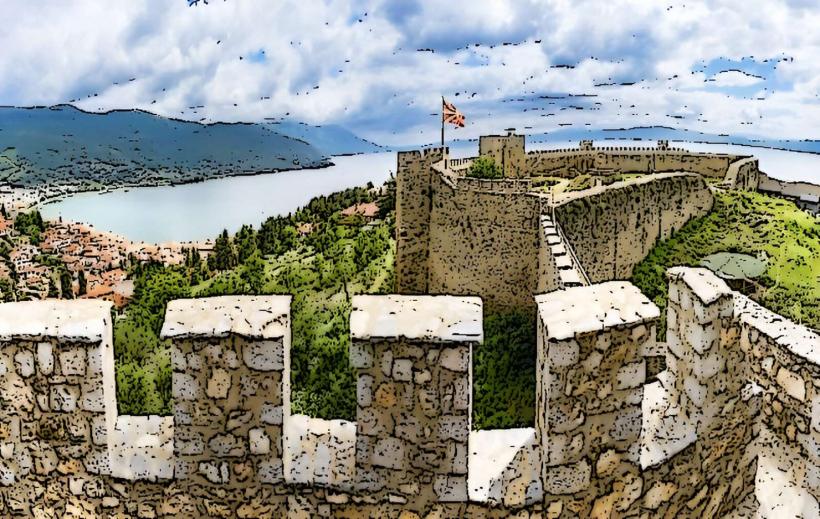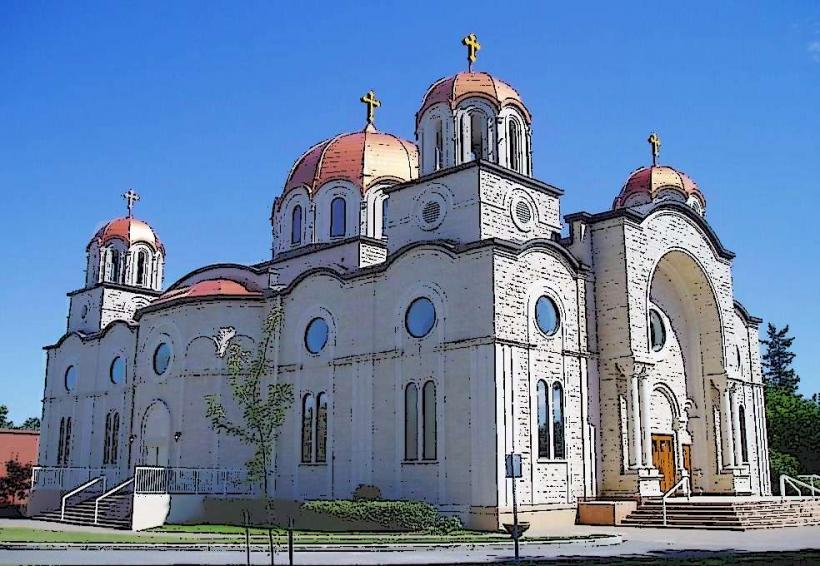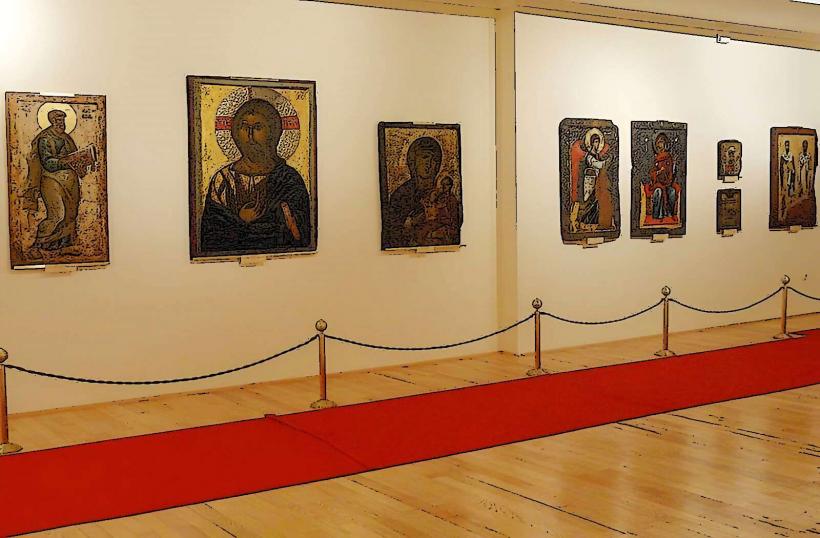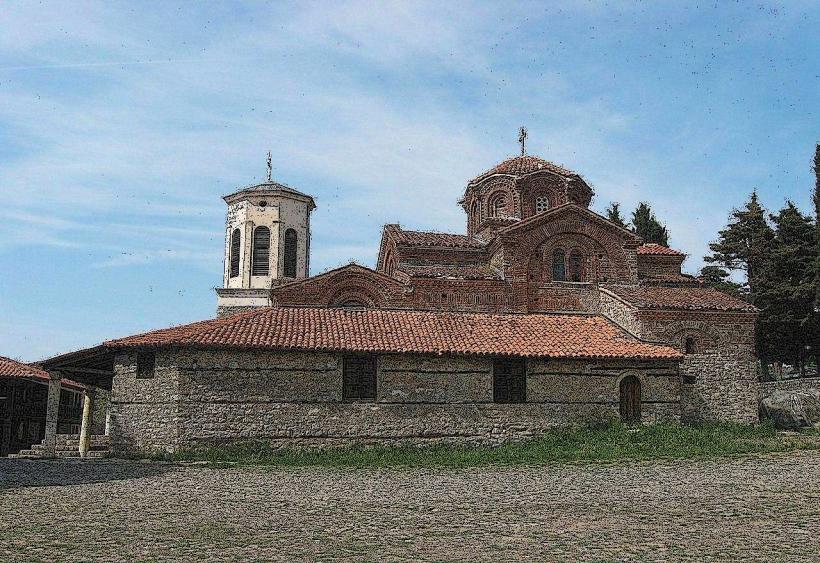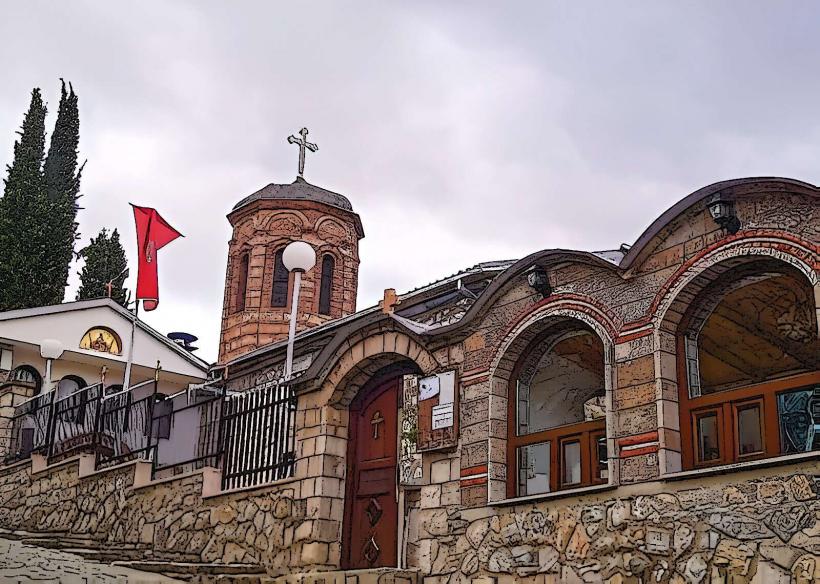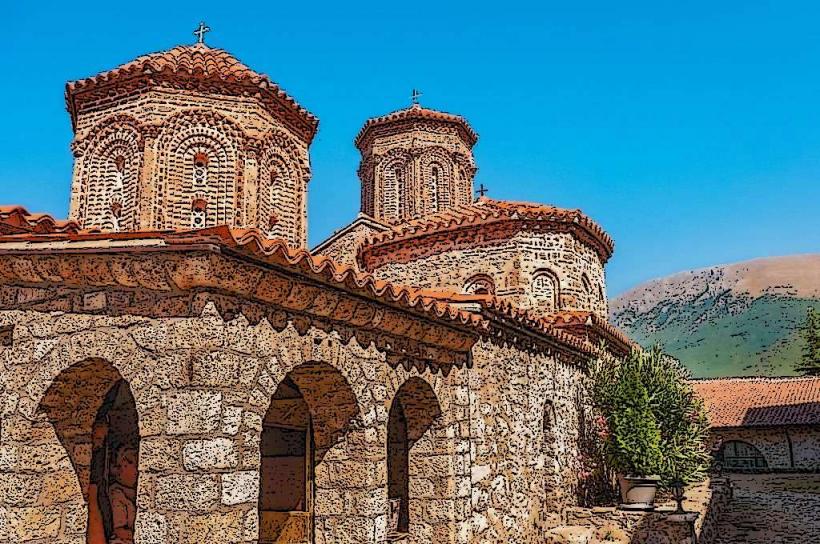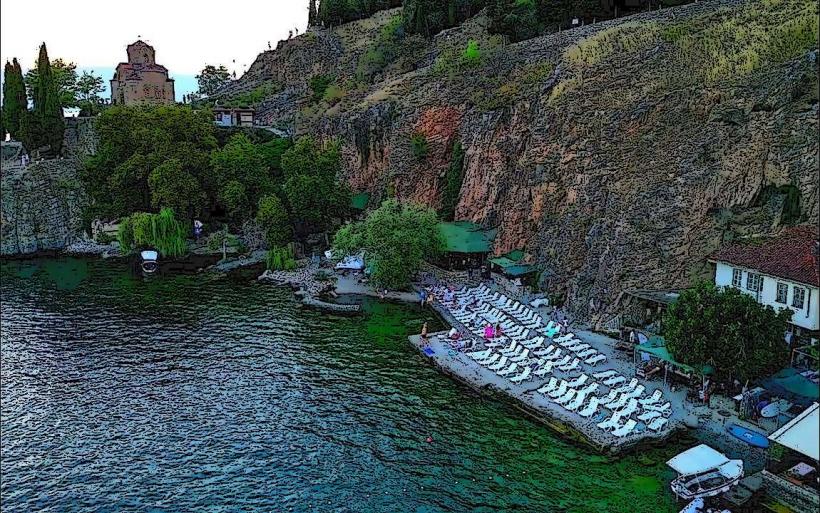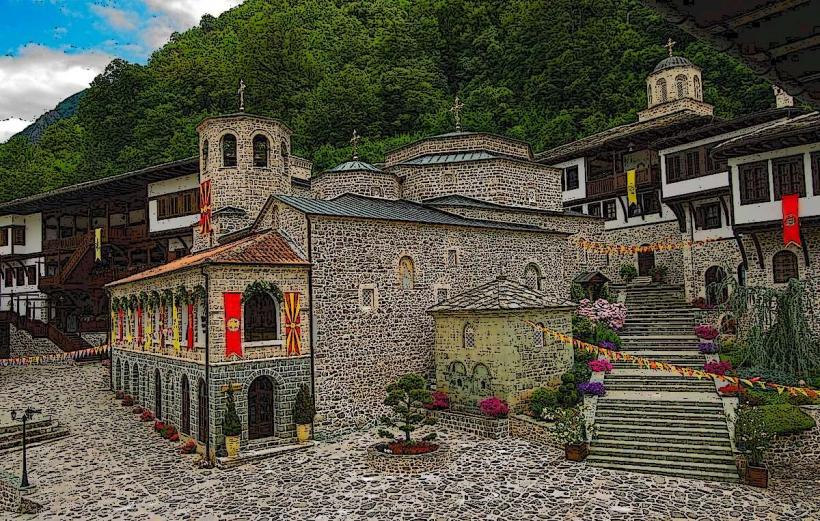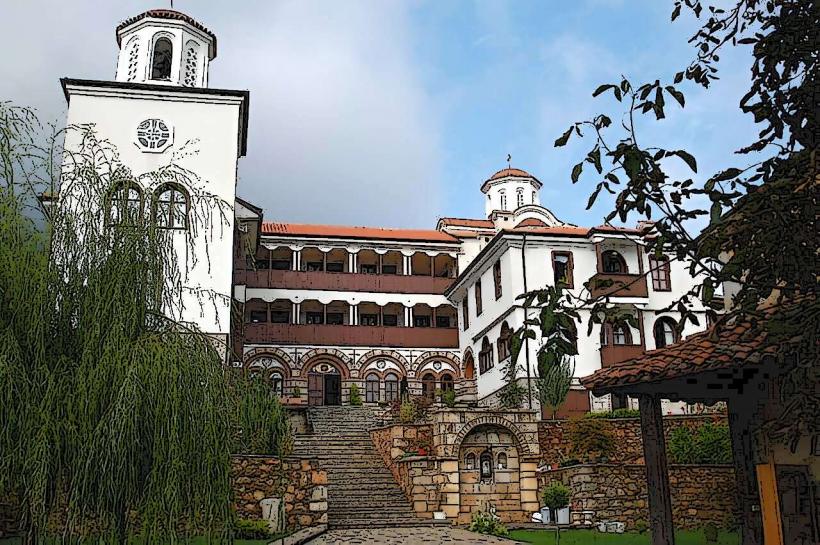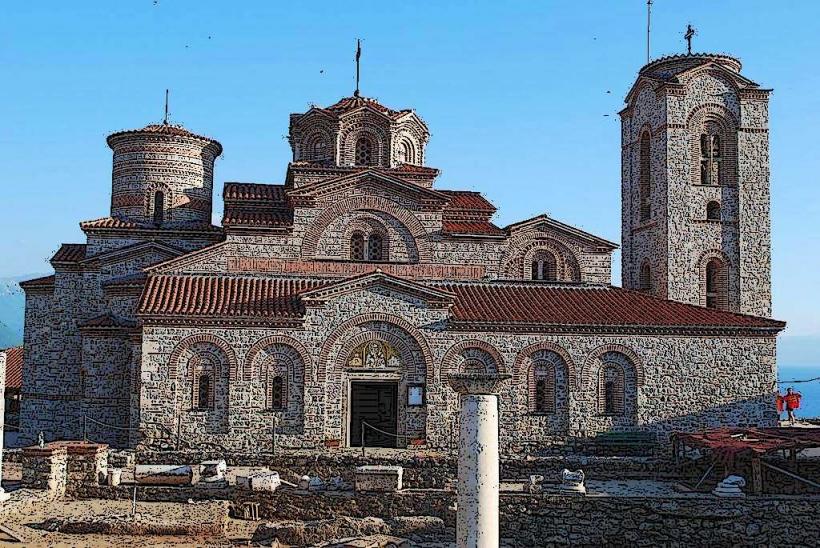Information
Landmark: Church of St. SofiaCity: Ohrid
Country: North Macedonia
Continent: Europe
The Church of St. Sofia is one of the most important and historically significant churches in Ohrid, North Macedonia. Known for its architectural beauty and religious importance, it stands as a monument to the rich Byzantine heritage of the region.
Overview
- Location: The Church of St. Sofia is located in Ohrid, a UNESCO World Heritage town on the shores of Lake Ohrid. It is situated in the historical center of Ohrid, close to the Ohrid Fortress and other important landmarks.
- Dedication: The church is dedicated to Saint Sophia, which translates to Holy Wisdom in Greek. In Christian tradition, Saint Sophia is a symbol of the wisdom of God, and the church is associated with the spiritual depth and sacredness of this concept.
Historical Significance
Byzantine Architecture:
- Built during the 11th century, the Church of St. Sofia is a Byzantine-style structure with a domed roof, a typical feature of the period. The church was constructed during the Byzantine Empire and reflects the influence of Byzantine architecture on religious buildings in the Balkans.
- The church has a cross-in-square layout, with a large central dome and side chapels. This architectural form was common in Byzantine church designs, creating a spacious interior with a focus on the central altar.
Role in Ohrid’s Religious History:
- The Church of St. Sofia was originally built as a cathedral of the Archbishopric of Ohrid, an important religious institution that was part of the Byzantine Empire. It served as the primary place of worship for the Christian community in Ohrid.
- It is believed that the church was also used for royal and imperial ceremonies during the medieval period, adding to its significance as a center of power and spirituality in the region.
Connection to the Ohrid Literary School:
- The church has a deep connection to the Ohrid Literary School, a key institution in the spread of Slavic literacy and the Cyrillic alphabet. The school, founded by Saint Clement of Ohrid in the 9th century, was instrumental in the development of Slavic Christianity and Orthodox culture in the Balkans.
- Although the Church of St. Sofia itself was built after Saint Clement’s time, the legacy of the Ohrid Literary School and its intellectual contributions to Christianity are strongly felt in the church’s religious and cultural heritage.
Architectural Features
Exterior:
- The exterior of the church is built with stone and brick, typical of Byzantine architecture. The facade is simple yet elegant, with arched windows and relief carvings that reflect the religious and cultural influences of the time.
- A notable feature of the church is its large dome, which is supported by four massive pillars, creating an expansive interior space. The dome is a defining feature of the church's architecture, symbolizing the heavens and the divine.
Interior:
- Inside the church, visitors can admire frescoes and icons that depict scenes from the Bible, saints, and biblical events. These frescoes were created by local artists and are significant examples of medieval Byzantine art.
- The frescoes inside the church date back to the 12th century, although much of the original artwork has been damaged or destroyed over time. Despite this, the surviving frescoes still convey the beauty and spiritual depth of the period.
Altar and Sacred Space:
- The altar area of the church is richly decorated, with iconostases (a screen of icons) that separate the altar from the rest of the church. This is a traditional feature in Orthodox Christian churches and emphasizes the sacredness of the altar and the space around it.
Cultural and Religious Role Today
- Active Religious Site:
- Although it is no longer a cathedral, the Church of St. Sofia remains an important place of worship for the local Orthodox Christian community. Services and religious ceremonies are still held here, and it continues to serve as a spiritual and cultural center in Ohrid.
- Museum and Cultural Heritage:
- The church is also a museum that showcases the art and history of medieval Ohrid. It has become an important part of the town's cultural and religious tourism, attracting visitors who are interested in the church’s artistic heritage and historical significance.
- As part of the UNESCO World Heritage Site that includes Ohrid and the surrounding region, the Church of St. Sofia contributes to the preservation of Slavic and Orthodox Christian heritage in the Balkans.
Conclusion
The Church of St. Sofia is a remarkable monument to Byzantine architecture, medieval history, and Orthodox Christianity in the Balkans. Its rich history, stunning frescoes, and architectural features make it one of the most important landmarks in Ohrid, a city known for its historical significance and cultural heritage. Whether as a site of religious devotion, a historical artifact, or a symbol of the spiritual life of the region, the Church of St. Sofia remains a cornerstone of Ohrid’s identity and a must-visit site for anyone interested in the region’s rich history.

